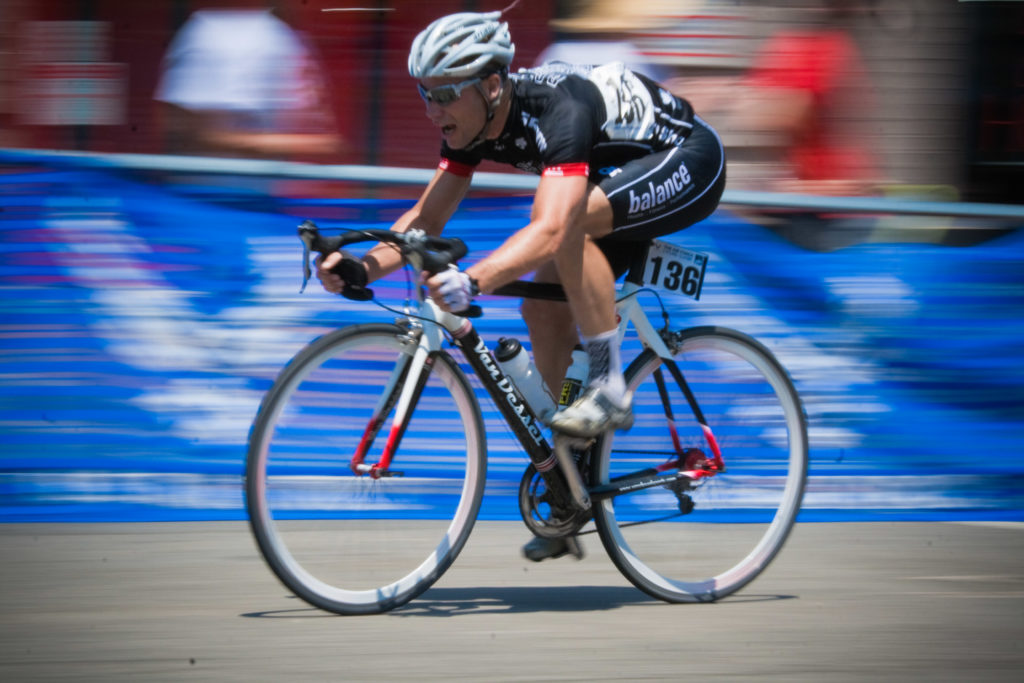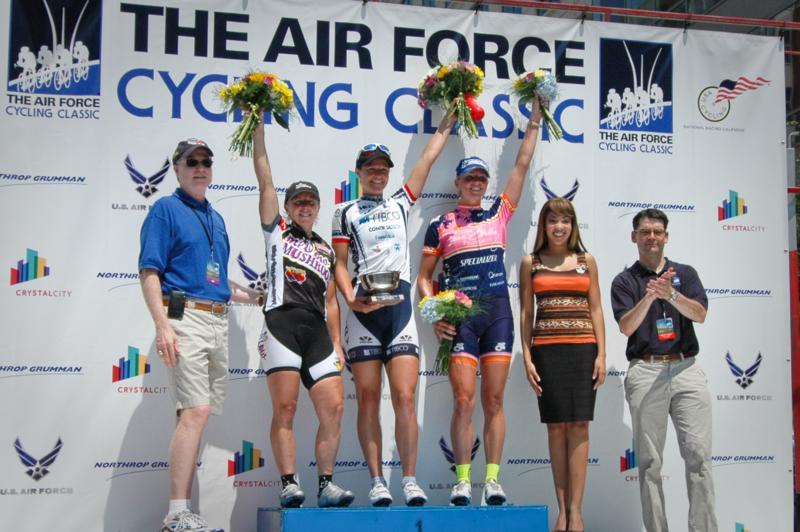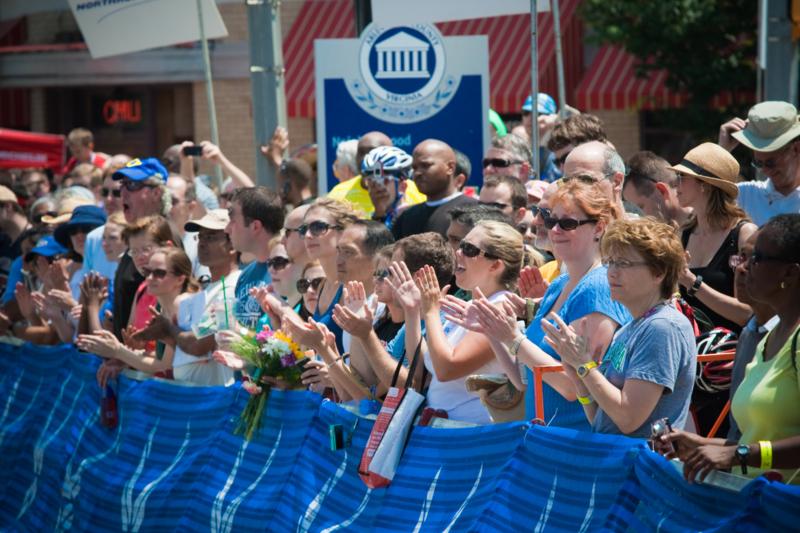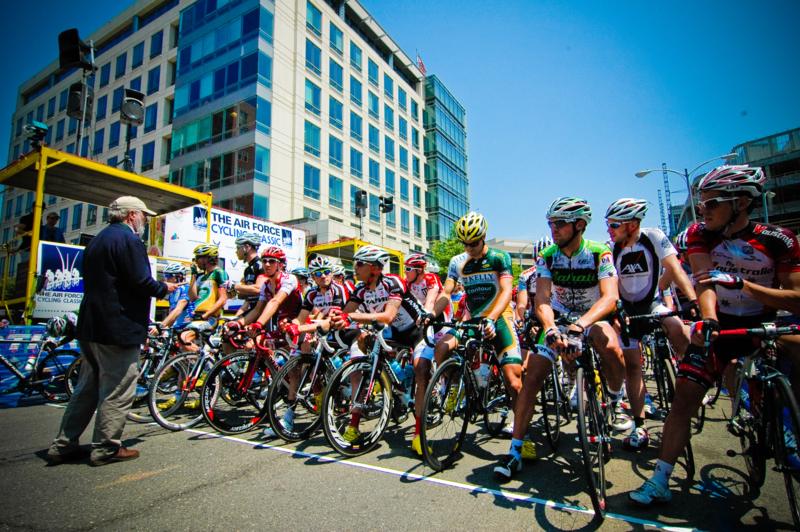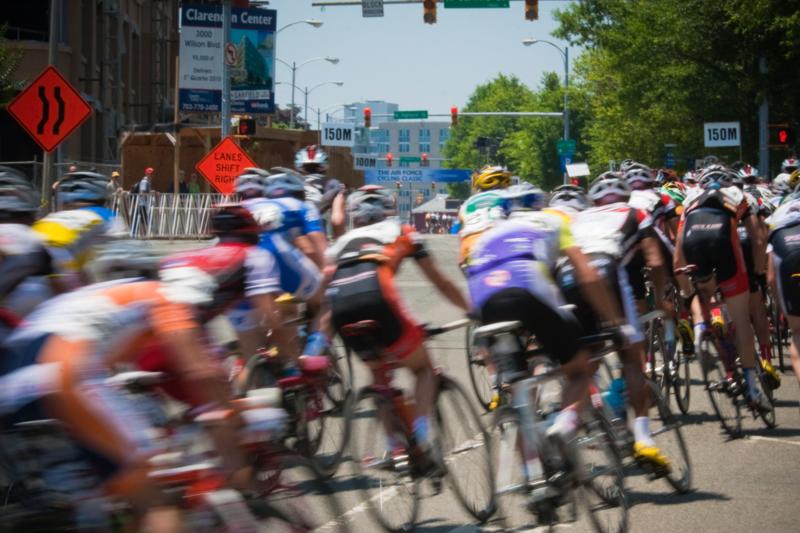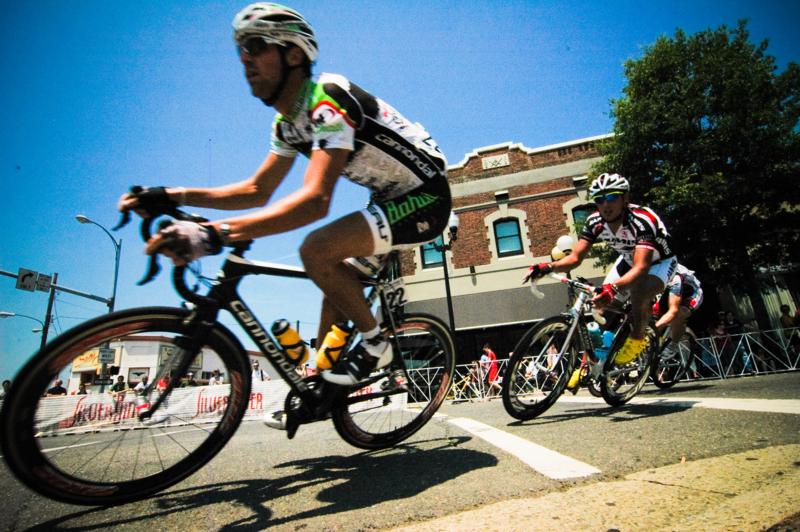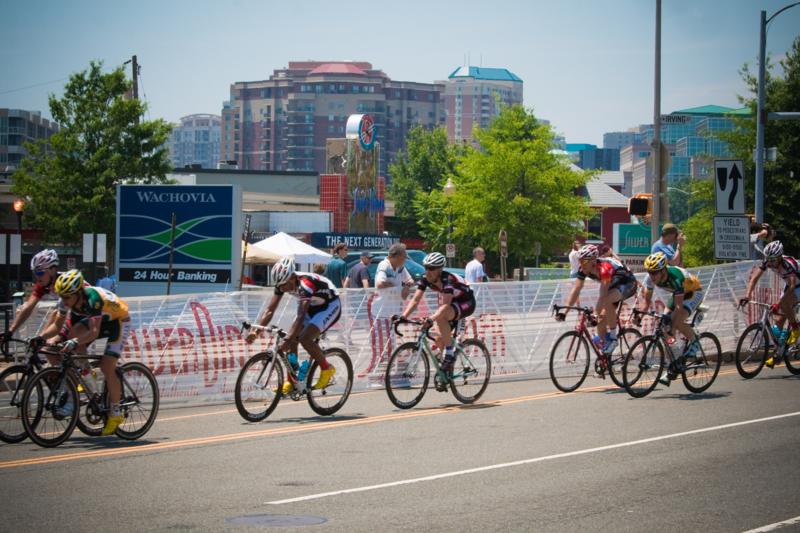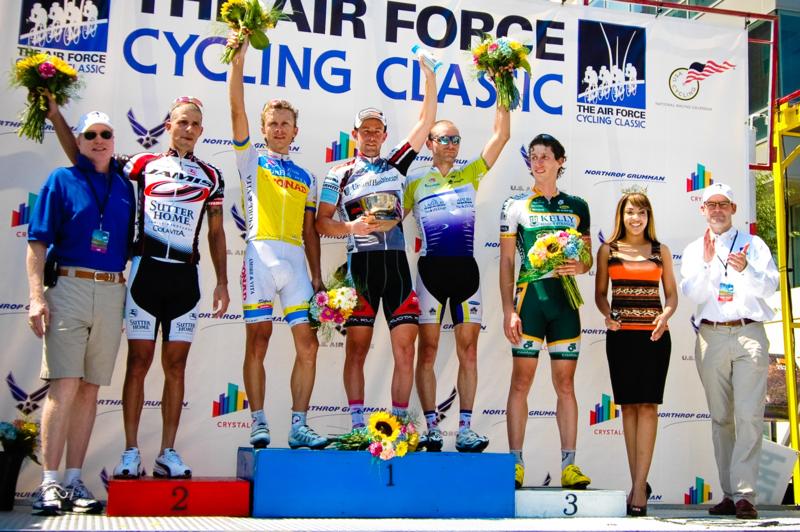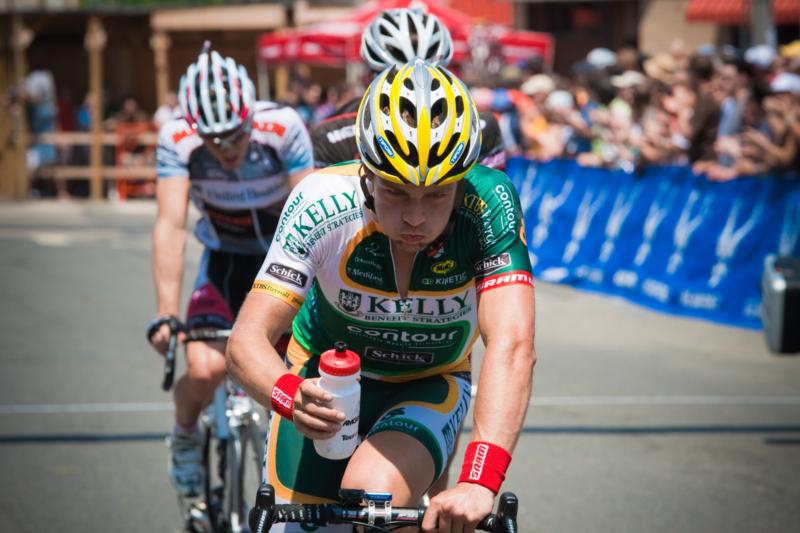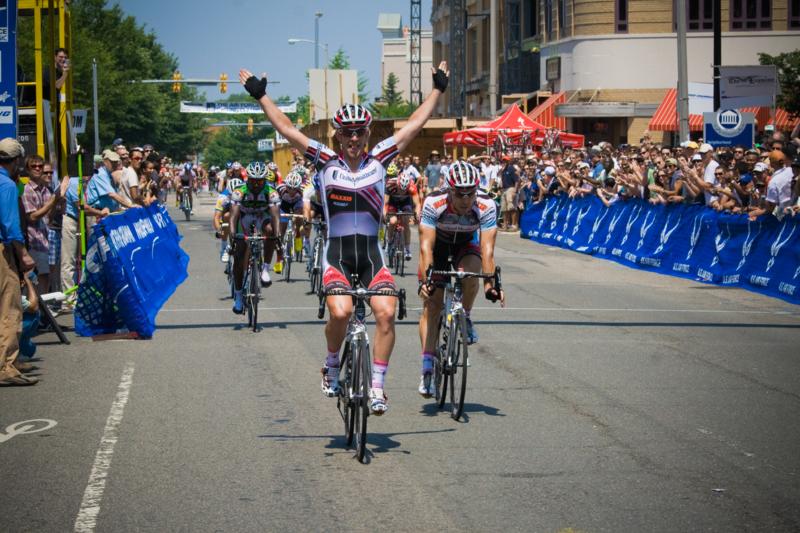Words by Barry Skidmore of People-Powered Arlington. Photos by Mark Blacknell.
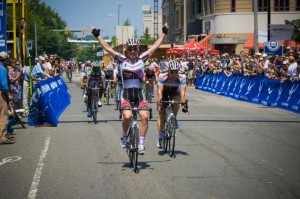 Australian sprinter Hilton Clarke overcame blazing temperatures, rough roads, and a challenging field to win the 13th annual Air Force Cycling Classic Clarendon Cup men’s pro race on Saturday. Clarke, racing for the first time with the United Healthcare team, outpaced a group of five other cyclists to take the win.
Australian sprinter Hilton Clarke overcame blazing temperatures, rough roads, and a challenging field to win the 13th annual Air Force Cycling Classic Clarendon Cup men’s pro race on Saturday. Clarke, racing for the first time with the United Healthcare team, outpaced a group of five other cyclists to take the win.
Brooke Miller of Team Tibco won the women’s elite race, sprinting to a dramatic finish that saw her one of her competitors flip her bike and crash 50 meters from the finish line.
Dozens of teams and hundreds of cyclists competed on the one-kilometer course in the heart of Clarendon, billed as one of the most challenging cycling courses in the United States.
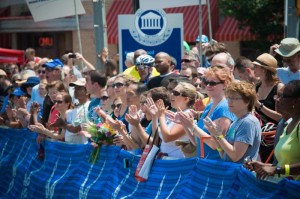 Hundreds turned out to watch some of the best cycling teams in the world, despite temperatures that reached well into the 90s. Many spectators stood near the course wall, while others set up folding chairs or sat at nearby sidewalk cafes.
Hundreds turned out to watch some of the best cycling teams in the world, despite temperatures that reached well into the 90s. Many spectators stood near the course wall, while others set up folding chairs or sat at nearby sidewalk cafes.
The men’s 100k race began at 12:15 p.m. and a minor crash in the first few laps proved a prelude to what would be a brutal and hard-fought competition. There were several crashes throughout the race and many cyclists would end the day bloodied and bruised.
In the early laps, many teams jockeyed for position with no single group of cyclists able to establish dominance. There were multiple attacks but the breakaways were all eventually reabsorbed and served mostly as “probing attacks” allowing the teams to assess both their competition and the course.
That assessment would be more important than ever this year. This was the first Clarendon Cup in several years to have radios banned from the race. In previous years teams had been able to rely on their team director, often perched on top of a building with a bird’s eye view of the course, to provide real-time race updates and coordinate strategy. Now riders could only rely on their observations and what basic information the team directors could provide using hand signals.
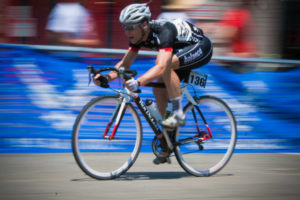 This lack of communication proved to have a decisive outcome. At the halfway point of the race officials allowed for a “feeding” where riders could obtain new water bottles and food. During the feeding, Clarke and five other cyclists initiated a breakaway, utilizing the confusion and lack of communication between to establish a dominating lead before the field could re-organize to catch them.
This lack of communication proved to have a decisive outcome. At the halfway point of the race officials allowed for a “feeding” where riders could obtain new water bottles and food. During the feeding, Clarke and five other cyclists initiated a breakaway, utilizing the confusion and lack of communication between to establish a dominating lead before the field could re-organize to catch them.
One rider who did try to catch up was local cyclist Chuck Hutcheson, an Army corporal stationed at Fort Myer, racing for Battley Harley Davidson. Hutcheson initiated a solo attack in an attempt to catch the breakaway. He established a commanding lead from the field and had a shot at catching the breakaway when he crashed into a wall. The damage to his bike forced him to abandon the race.
Eventually the breakaway lapped the field, allowing the lead cyclists to coordinate with their teammates to form protective packs to position for the final sprint. Here, United Healthcare excelled, pushing to the front of the field and holding their position, which allowed Clark to establish a second breakaway in the final laps and eventually clinch the victory.
“My team did a wonderful job,” Clarke said after the race, “they made my job look easy.”
Men’s top five finishers:
- Hilton Clarke (U. Healthcare)
- Jaroslav Dareowsky (Amore-Vita)
- Dan Holt (Team Type One)
- Luis Amaran (Jamis/ Sutter Home)
- Scott Zawizanski (Kelly Benefit Strategies)
Women’s top five finishers:
- Brooke Miller (Team Tibco)
- Laura VanGuilder (Mellow Mushroom)
- Erica Allaer (Vera Bradley Foundation)
- Sinead Miller (Peanut Butter & Co.)
- Melissa Sanborn (CyclePath Racing)


